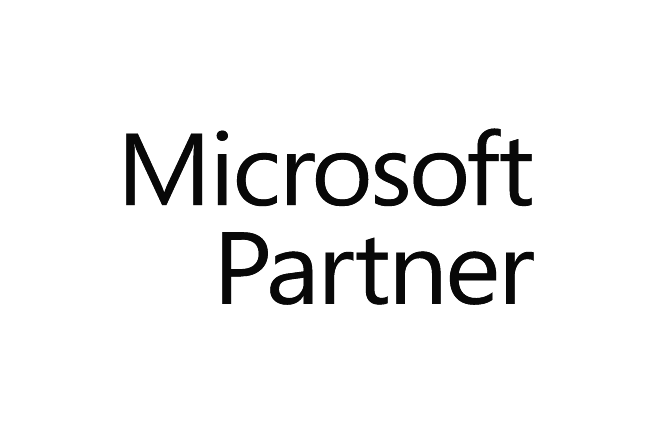
Microsoft Official Course (MOC)
Course
Course SC-200T00-A: Microsoft Security Operations Analyst
(4 days)
За Курса (About this Course):
Цели – Какво ще научите (Course Goals/Skills Gained):
- Explain how Microsoft Defender for Endpoint can remediate risks in your environment
- Create a Microsoft Defender for Endpoint environment
- Configure Attack Surface Reduction rules on Windows 10 devices
Курсът е предназначен за (Audience):
- The Microsoft Security Operations Analyst collaborates with organizational stakeholders to secure information technology systems for the organization. Their goal is to reduce organizational risk by rapidly remediating active attacks in the environment, advising on improvements to threat protection practices, and referring violations of organizational policies to appropriate stakeholders. Responsibilities include threat management, monitoring, and response by using a variety of security solutions across their environment. The role primarily investigates, responds to, and hunts for threats using Microsoft Azure Sentinel, Azure Defender, Microsoft 365 Defender, and third-party security products. Since the Security Operations Analyst consumes the operational output of these tools, they are also a critical stakeholder in the configuration and deployment of these technologies.
Формат на курса


Език на курса: български (английски е наличен като опция)
Учебни Метериали: в електронен формат (Учебните материали са на английски), включени в цената с неограничен достъп.
Лабораторна среда: всеки курсист разполага със собствена лаб среда, където се провеждат упражненията, част от курса.


Продължителност
- 4 работни дни (09:00 – 17:00)
или
- 32 уч.ч. обучение (теория и практика) в извънработно време с продължителност 3 седмици
- събота и неделя 10:00 – 14:00, 14:00 – 18:00, 18:00 – 22:00
- понеделник и сряда 19:00 – 23:00
- вторник и четвъртък 19:00 – 23:00
Плащане
Заявка за издаване на фактура се приема към момента на записването на съответния курс.
Фактура се издава в рамките на 7 дни от потвърждаване на плащането.
Предстоящи Курсове
[tribe_events_list category=”azure”]
За повече информация използвайте формата за контакт.
Ще се свържем с Вас за потвърждаване на датите.
Предпоставки (Изисквания) за Участие (Prerequisites):
-
-
-
-
- Basic understanding of Microsoft 365
- Fundamental understanding of Microsoft security, compliance, and identity products
- Intermediate understanding of Windows 10
- Familiarity with Azure services, specifically Azure SQL Database and Azure Storage
- Familiarity with Azure virtual machines and virtual networking
- Basic understanding of scripting concepts.
-
-
-
Курсът подготвя за следните сертификационни нива
-
SC-200: Microsoft Security Operations Analyst
- Може да се сертифицирате в нашия тест център с ваучер с отстъпка от цената на изпит.
Curriculum
- 8 Sections
- 47 Lessons
- 10 Weeks
- Module 1: Mitigate threats using Microsoft Defender for EndpointImplement the Microsoft Defender for Endpoint platform to detect, investigate, and respond to advanced threats. Learn how Microsoft Defender for Endpoint can help your organization stay secure. Learn how to deploy the Microsoft Defender for Endpoint environment, including onboarding devices and configuring security. Learn how to investigate incidents and alerts using Microsoft Defender for Endpoints. Perform advanced hunting and consult with threat experts. You will also learn how to configure automation in Microsoft Defender for Endpoint by managing environmental settings.. Lastly, you will learn about your environment's weaknesses by using Threat and Vulnerability Management in Microsoft Defender for Endpoint.11
- 2.1Protect against threats with Microsoft Defender for Endpoint
- 2.2Deploy the Microsoft Defender for Endpoint environment
- 2.3Implement Windows 10 security enhancements with Microsoft Defender for Endpoint
- 2.4Manage alerts and incidents in Microsoft Defender for Endpoint
- 2.5Perform device investigations in Microsoft Defender for Endpoint
- 2.6Perform actions on a device using Microsoft Defender for Endpoint
- 2.7Perform evidence and entities investigations using Microsoft Defender for Endpoint
- 2.8Configure and manage automation using Microsoft Defender for Endpoint
- 2.9Configure for alerts and detections in Microsoft Defender for Endpoint
- 2.10Utilize Threat and Vulnerability Management in Microsoft Defender for Endpoint
- 2.11Lab : Mitigate threats using Microsoft Defender for Endpoint
- Module 2: Mitigate threats using Microsoft 365 DefenderAnalyze threat data across domains and rapidly remediate threats with built-in orchestration and automation in Microsoft 365 Defender. Learn about cybersecurity threats and how the new threat protection tools from Microsoft protect your organization’s users, devices, and data. Use the advanced detection and remediation of identity-based threats to protect your Azure Active Directory identities and applications from compromise.7
- 3.1Introduction to threat protection with Microsoft 365
- 3.2Mitigate incidents using Microsoft 365 DefenderProtect your identities with Azure AD Identity Protection
- 3.3Remediate risks with Microsoft Defender for Office 365
- 3.4Safeguard your environment with Microsoft Defender for Identity
- 3.5Secure your cloud apps and services with Microsoft Cloud App Security
- 3.6Respond to data loss prevention alerts using Microsoft 365
- 3.7Manage insider risk in Microsoft 365Lab : Mitigate threats using Microsoft 365 Defender
- Module 3: Mitigate threats using Azure DefenderUse Azure Defender integrated with Azure Security Center, for Azure, hybrid cloud, and on-premises workload protection and security. Learn the purpose of Azure Defender, Azure Defender's relationship to Azure Security Center, and how to enable Azure Defender. You will also learn about the protections and detections provided by Azure Defender for each cloud workload. Learn how you can add Azure Defender capabilities to your hybrid environment.5
- Module 4: Create queries for Azure Sentinel using Kusto Query Language (KQL)Write Kusto Query Language (KQL) statements to query log data to perform detections, analysis, and reporting in Azure Sentinel. This module will focus on the most used operators. The example KQL statements will showcase security related table queries. KQL is the query language used to perform analysis on data to create analytics, workbooks, and perform hunting in Azure Sentinel. Learn how basic KQL statement structure provides the foundation to build more complex statements. Learn how to summarize and visualize data with a KQL statement provides the foundation to build detections in Azure Sentinel. Learn how to use the Kusto Query Language (KQL) to manipulate string data ingested from log sources.5
- Module 5: Configure your Azure Sentinel environmentGet started with Azure Sentinel by properly configuring the Azure Sentinel workspace. Traditional security information and event management (SIEM) systems typically take a long time to set up and configure. They're also not necessarily designed with cloud workloads in mind. Azure Sentinel enables you to start getting valuable security insights from your cloud and on-premises data quickly. This module helps you get started. Learn about the architecture of Azure Sentinel workspaces to ensure you configure your system to meet your organization's security operations requirements. As a Security Operations Analyst, you must understand the tables, fields, and data ingested in your workspace. Learn how to query the most used data tables in Azure Sentinel.5
- Module 6: Connect logs to Azure SentinelConnect data at cloud scale across all users, devices, applications, and infrastructure, both on-premises and in multiple clouds to Azure Sentinel. The primary approach to connect log data is using the Azure Sentinel provided data connectors. This module provides an overview of the available data connectors. You will get to learn about the configuration options and data provided by Azure Sentinel connectors for Microsoft 365 Defender.6
- 7.1Connect data to Azure Sentinel using data connectors
- 7.2Connect Microsoft services to Azure Sentinel
- 7.3Connect Microsoft 365 Defender to Azure Sentinel
- 7.4Connect Windows hosts to Azure SentinelConnect Common Event Format logs to Azure Sentinel
- 7.5Connect syslog data sources to Azure SentinelConnect threat indicators to Azure Sentinel
- 7.6Lab : Connect logs to Azure Sentinel
- Module 7: Create detections and perform investigations using Azure SentinelDetect previously uncovered threats and rapidly remediate threats with built-in orchestration and automation in Azure Sentinel. You will learn how to create Azure Sentinel playbooks to respond to security threats. You'll investigate Azure Sentinel incident management, learn about Azure Sentinel events and entities, and discover ways to resolve incidents. You will also learn how to query, visualize, and monitor data in Azure Sentinel.5
- 8.1Threat detection with Azure Sentinel analytics
- 8.2Threat response with Azure Sentinel playbooksSecurity incident management in Azure Sentinel
- 8.3Use entity behavior analytics in Azure Sentinel
- 8.4Query, visualize, and monitor data in Azure Sentinel
- 8.5Lab : Create detections and perform investigations using Azure Sentinel
- Module 8: Perform threat hunting in Azure SentinelIn this module, you'll learn to proactively identify threat behaviors by using Azure Sentinel queries. You'll also learn to use bookmarks and livestream to hunt threats. You will also learn how to use notebooks in Azure Sentinel for advanced hunting.3










